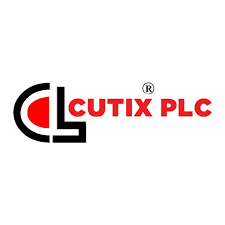Cutix Plc, a leading Nigerian cable manufacturing company, has reported a significant downturn in its financial performance for the first quarter of the financial year ending July 31, 2025. The company’s pre-tax profit plummeted by 81 percent year-on-year to ₦84 million, driven by a combination of sluggish revenue growth, escalating raw material costs, and surging interest expenses. This sharp decline in profitability, coupled with a highly leveraged balance sheet and concerns over liquidity, has raised questions about the company’s financial health despite a robust 52.2 percent year-to-date gain in its stock price. The announcement of a modest final dividend of 10 kobo per share, set to be paid on September 2, 2025, underscores Cutix’s commitment to shareholders, but the underlying challenges highlight the need for strategic adjustments to navigate a high-cost, high-interest rate environment. This article provides an in-depth analysis of Cutix’s Q1 2025 results, the factors contributing to its financial strain, and the broader implications for the company and Nigeria’s manufacturing sector.
Financial Performance: A Steep Decline in Profitability
Cutix Plc’s first-quarter results for 2025 paint a challenging picture, with pre-tax profit dropping sharply to ₦84 million, an 81 percent decline from the same period in the previous year. This significant contraction was driven by a combination of factors, including a 7.40 percent decline in revenue from cable sales, the company’s primary income stream, which fell to ₦3.282 billion. The drop in revenue reflects weaker demand for Cutix’s products, possibly due to macroeconomic pressures such as inflation, reduced consumer purchasing power, or increased competition within Nigeria’s cable manufacturing industry.
Compounding the revenue shortfall was a 7 percent increase in raw material costs, which pushed the cost of sales to ₦2.898 billion for the quarter. This rise in input costs, likely driven by global supply chain disruptions and Nigeria’s reliance on imported raw materials, significantly eroded gross margins, which contracted by more than 21 percent to 18 percent. The squeeze on gross margins highlights the challenges faced by manufacturers in Nigeria, where volatile exchange rates and inflationary pressures can quickly erode profitability.
Despite efforts to manage costs, including reductions in administrative and distribution expenses, these savings were insufficient to offset the combined impact of lower revenue and higher input costs. As a result, operating profit fell by 35 percent year-on-year to ₦276 million, representing just 18 percent of the company’s full-year profit for 2025. The operating margin also contracted to 8 percent, signaling reduced efficiency in converting revenue into profit.
The most significant blow to Cutix’s profitability came from a dramatic increase in finance costs, which soared to ₦191 million, up from ₦73 million in the same period of the previous year. This increase, which already accounts for 43 percent of the prior year’s total finance costs, reflects the company’s growing reliance on debt to sustain operations and finance expansion. Rising interest charges on term loans, commercial papers, and overdrafts weakened Cutix’s interest coverage ratio, which plummeted to 1.44 times from 5.79 times a year earlier. This sharp decline indicates a reduced ability to service debt obligations, raising concerns about the company’s financial stability in a high-interest rate environment.
Consequently, net profit for the quarter fell by 81 percent to ₦57 million, representing only 6 percent of the prior year’s total earnings. This significant erosion of profitability underscores the challenges Cutix faces in maintaining its financial performance amid rising costs and a more leveraged capital structure.
Balance Sheet Dynamics: Asset Growth and Rising Debt
While Cutix’s income statement reflects significant challenges, its balance sheet tells a more complex story. Total assets grew by 33.56 percent year-on-year to ₦10.677 billion, driven primarily by an increase in current assets, which now account for over 57 percent of the total asset base. Inventories and trade receivables were the primary contributors to this growth, making up more than 56 percent of total assets combined. This concentration suggests that Cutix has been stockpiling inventory and extending credit to customers, likely in an effort to maintain market share and support sales in a challenging economic environment.
However, the growth in assets comes with significant caveats. Retained earnings, a key indicator of a company’s ability to reinvest profits or pay dividends, dropped by 72 percent to ₦711 million, reflecting the severe impact of weakened profitability. Meanwhile, total borrowings surged by 175 percent to ₦5.004 billion, accounting for 47 percent of total assets. This dramatic increase in debt signals a heavier reliance on borrowed funds to finance operations, inventory purchases, and potential expansion projects.
The shift toward a more leveraged capital structure has significant implications for Cutix’s financial risk profile. With nearly half of its assets now funded by debt, the company is more exposed to fluctuations in interest rates and economic conditions. In Nigeria’s high-interest rate environment, where borrowing costs have risen due to monetary policy tightening, this increased leverage magnifies both the potential for returns and the risk of financial distress. If Cutix is unable to improve revenue growth, manage costs, or collect receivables efficiently, its ability to service its debt obligations could be further strained.
Stock Performance and Investor Sentiment
Despite the challenging financial results, Cutix’s stock has performed remarkably well in 2025, with shares priced at ₦3.50 as of market close on August 29, 2025, representing a year-to-date gain of 52.2 percent. This rally suggests that investors remain optimistic about Cutix’s long-term prospects, likely driven by its strong position within Nigeria’s cable manufacturing industry and the broader growth potential of the sector. The company’s role as a key supplier of electrical cables for infrastructure, construction, and industrial applications positions it to benefit from Nigeria’s ongoing economic development and urbanization.
However, the disconnect between Cutix’s stock performance and its underlying financial challenges raises questions about the sustainability of investor optimism. The company’s declining profitability, coupled with rising debt and liquidity concerns, suggests that the stock’s rally may be driven more by market sentiment than by fundamental strength. Unless Cutix can address its operational and financial challenges, the current valuation may prove unsustainable, potentially leading to a correction if investor confidence wanes.
Dividend Announcement: A Signal of Commitment
In a move to maintain shareholder confidence, Cutix declared a final dividend of 10 kobo per share for the 2025 financial year, scheduled to be paid on September 2, 2025. While modest, this dividend underscores the company’s commitment to rewarding shareholders despite its financial challenges. However, the sharp decline in retained earnings raises concerns about the sustainability of dividend payments in the future, particularly if profitability continues to erode. Investors will likely be watching closely to see whether Cutix can stabilize its financial performance and maintain its dividend policy in the face of mounting pressures.
Challenges and Risks: Liquidity and Working Capital Management
The concentration of asset growth in inventories and trade receivables highlights significant challenges in liquidity and working capital management. High inventory levels, while necessary to meet demand, tie up capital and increase the risk of obsolescence or spoilage, particularly in a volatile economic environment. Similarly, the growth in trade receivables suggests that Cutix is extending significant credit to customers, which could strain liquidity if collections are delayed or defaults occur.
Effective working capital management will be critical for Cutix to navigate its current challenges. Improving inventory turnover, tightening credit policies, and accelerating receivable collections could help free up cash flow and reduce reliance on debt. Additionally, controlling debt servicing costs will be essential to maintaining financial stability, particularly given the sharp rise in finance costs and the weakened interest coverage ratio.
Broader Context: Nigeria’s Manufacturing Sector
Cutix’s challenges are not unique but reflect broader pressures facing Nigeria’s manufacturing sector. Rising raw material costs, driven by global supply chain disruptions and Nigeria’s dependence on imported inputs, have squeezed margins for many manufacturers. The depreciation of the naira and inflationary pressures have further exacerbated cost pressures, making it difficult for companies to maintain profitability without passing on higher prices to consumers.
The high-interest rate environment, a result of the Central Bank of Nigeria’s efforts to curb inflation, has also increased borrowing costs, placing additional strain on companies like Cutix that rely on debt to finance operations. While stable oil prices and a more predictable exchange rate have provided some relief, the manufacturing sector continues to face structural challenges, including inadequate infrastructure, unreliable power supply, and bureaucratic hurdles.
Despite these challenges, Nigeria’s manufacturing sector remains a critical driver of economic growth, with companies like Cutix playing a vital role in supporting infrastructure development and industrialization. The demand for electrical cables, driven by investments in construction, power distribution, and telecommunications, positions Cutix to benefit from long-term growth trends. However, the company must address its operational and financial challenges to capitalize on these opportunities.
Strategic Considerations for Cutix
To navigate the current challenges and restore profitability, Cutix will need to adopt a multifaceted strategy. First, the company should focus on optimizing its cost structure by exploring alternative sourcing strategies for raw materials, such as local suppliers or long-term contracts to hedge against price volatility. Streamlining operations and improving efficiency in production processes could also help mitigate the impact of rising input costs.
Second, Cutix must prioritize working capital management to improve liquidity and reduce reliance on debt. This could involve implementing stricter credit policies, accelerating receivable collections, and optimizing inventory levels to align with demand. By freeing up cash flow, the company can reduce its dependence on expensive borrowing and strengthen its financial position.
Third, Cutix should explore opportunities to diversify its revenue streams, such as expanding into new markets or developing innovative products that cater to emerging needs in Nigeria’s infrastructure and industrial sectors. Strategic partnerships or collaborations with other manufacturers could also enhance the company’s competitiveness and market reach.
Finally, effective communication with investors will be critical to maintaining confidence in the face of declining profitability. Transparency about the company’s challenges and its plans to address them can help sustain the positive sentiment that has driven the stock’s rally in 2025.
Implications for Investors and the Market
The sharp decline in Cutix’s profitability raises important considerations for investors. While the stock’s 52.2 percent year-to-date gain reflects optimism about the company’s position in the cable industry, the underlying financial challenges suggest rising risks. Investors will need to weigh the potential for long-term growth against the immediate pressures of declining margins, rising debt, and liquidity concerns.
The broader Nigerian equity market, as evidenced by the recent rally on the NGX, remains buoyant, driven by sectors like insurance and industrial goods. However, Cutix’s performance serves as a reminder of the risks inherent in investing in manufacturing companies exposed to macroeconomic volatility. Diversification, careful stock selection, and a focus on companies with strong fundamentals will be key for investors navigating Nigeria’s capital market.
Conclusion
Cutix Plc’s first-quarter results for 2025 highlight the significant challenges facing one of Nigeria’s leading cable manufacturers. The 81 percent drop in pre-tax profit, driven by sluggish revenue, rising raw material costs, and soaring finance expenses, underscores the pressures of operating in a high-cost, high-interest rate environment. While the company’s balance sheet reflects asset growth, the surge in borrowings and decline in retained earnings signal increasing financial strain.
Despite these challenges, Cutix’s stock has rallied by 52.2 percent in 2025, reflecting investor optimism about its long-term potential. The declaration of a 10 kobo per share dividend demonstrates the company’s commitment to shareholders, but sustained profitability will depend on addressing cost pressures, improving working capital management, and controlling debt servicing costs. As Cutix navigates these challenges, its ability to adapt and innovate will be critical to maintaining its position as a leader in Nigeria’s cable industry and delivering value to investors.






